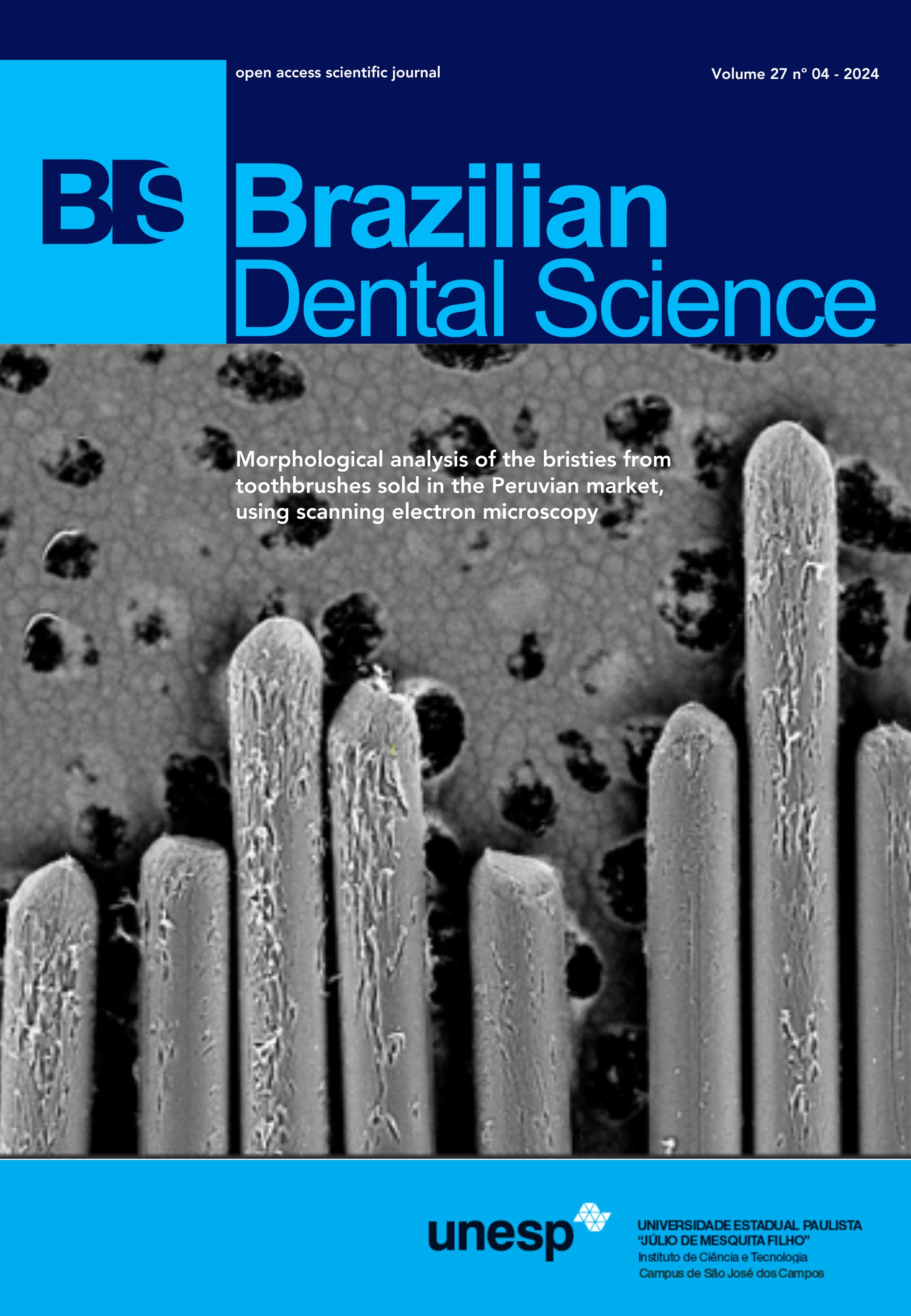Evaluation of monomer conversion, Vickers hardness, compressive strength & water sorption of commercial dental composite resins
DOI:
https://doi.org/10.4322/bds.2024.e4433Abstract
Objective: The objective was to compare four commercially available resin-based composites so that clinicians can select an economic material that has better monomer conversion and improved mechanical properties with lower water sorption. Material and Methods: Four commercially available resin-based composites were used. These included “Z350” and “Z250” by 3M, “Charisma” by Heraeus, and “All Purpose” by Dentex. Fourier transform infrared spectroscopy was done in attenuated total reluctance mode before curing and after curing to evaluate the degree of conversion. For hardness and compressive strength, specimens (n=5) were cured from both sides followed by storing them in distilled water. Then they were placed in an oven at 37 °C for 24 h, and tests were performed. The water sorption study was done for 7 days. Results: One-way ANOVA and then post hoc Tukey’s test (p <= 0.05) were done to analyze the data. The pattern of degree of conversion was Z250>Z350>Charisma>All Purpose. The mean hardness value of Z250 was the highest followed by Charisma, Z350, and All Purpose. In the case of compressive strength, the pattern was Charisma>Z350>Z250>All Purpose. Z250 had less water sorption followed by All Purpose, Z350, and Charisma. Conclusion: According to the obtained results of this in-vitro study Z250 can be a resin resin-based composite of choice for clinicians as it has all the acceptable results and is a mid-range in price.
KEYWORDS
Compressive strength; Degree of conversion; Hardness; Resin-based composites; Water sorption.
Downloads
Published
How to Cite
Issue
Section
License
Brazilian Dental Science uses the Creative Commons (CC-BY 4.0) license, thus preserving the integrity of articles in an open access environment. The journal allows the author to retain publishing rights without restrictions.
=================




























